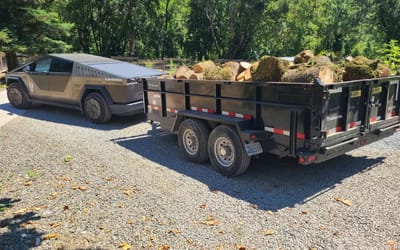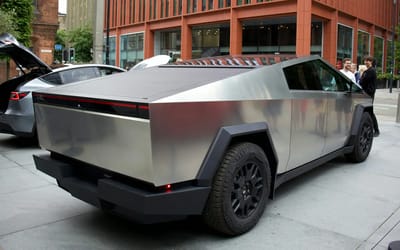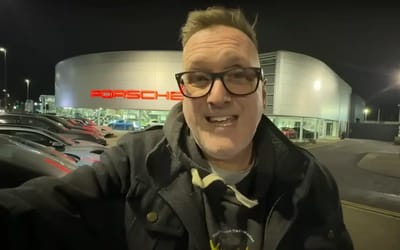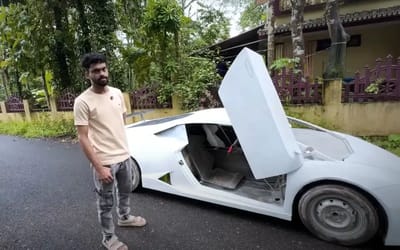New ‘protected intersection’ looks extremely confusing but actually makes sense
- The protected intersection is an innovation to keep vehicles, cyclists, and pedestrians safe
- It hails from the Netherlands – the nation boasting more bikes than its human population
- It appears complicated but, in reality, it’s a pretty simple idea – and it looks like it’s working
Published on May 31, 2024 at 12:25 PM (UTC+4)
by Amelia Jean Hershman-Jones
Last updated on Jun 01, 2024 at 2:02 PM (UTC+4)
Edited by
Tom Wood
With injury and collision rates higher on some busy road junctions, there’s a new idea aimed at keeping vehicles, cyclists, and pedestrians safer: the protected intersection.
Hailing from the Netherlands – the nation boasting more bikes than its population and with its capital city, Amsterdam, having a near 250 miles of bike paths – it’s now been adopted by the US and is spreading around the world.
And, while it might appear complicated, in reality, it’s a pretty simple idea – and the protected intersection is already saving lives on both sides of the Atlantic.
READ MORE! World’s fastest train is so quick that if you blink you’ll miss it
Let’s be honest – some intersections blur the lines of who needs to be where and who has the right of way.
The innovative road layout works by completely separating pedestrians and cyclists from the cars on the road.
Per the National Association of City Transportation Officials (NACTO), here’s how it works.
At protected intersections, a dedicated ‘bikeway is set back from the parallel motor vehicle traffic’ rather than merging with vehicular traffic.
What’s more, they have right of way over turning motor vehicles.
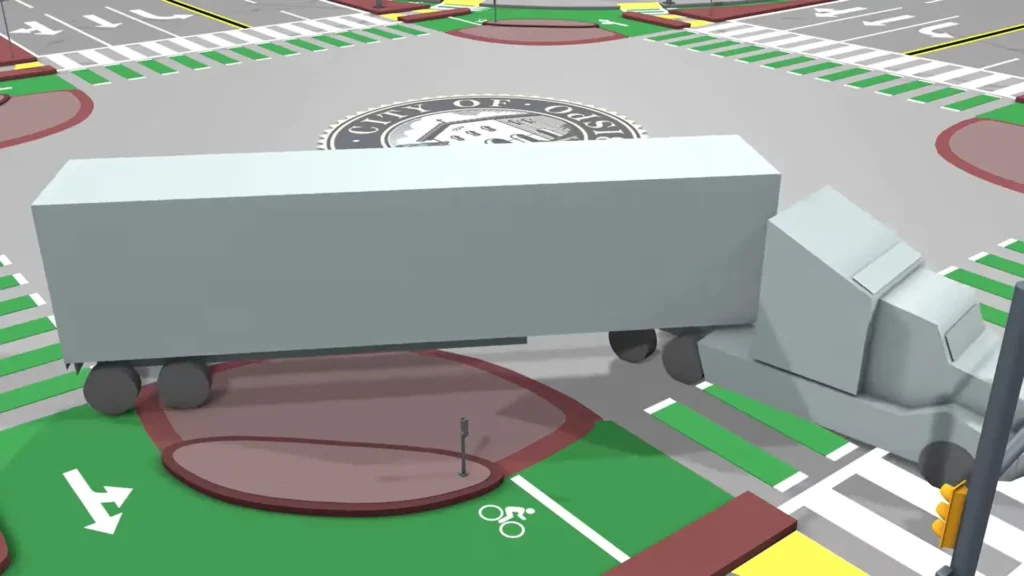
The setback between the car and bike lanes ‘makes cyclists more visible to turning drivers than they are on a conventional intersection’.
But wait, there’s more – corner islands further that protection and separation of the bike lane, as well as tightening the corner turn – forcing drivers to slow to less than 16 km/h (10 mph).
A ‘mountable override area’ can be added for trucks and other large vehicles.
A bike queue area after the crosswalk is the natural place for cyclists to wait, while the setback also forms a waiting zone for turning cars.
This means drivers can yield to bikes after starting to turn but before cyclists cross their path.
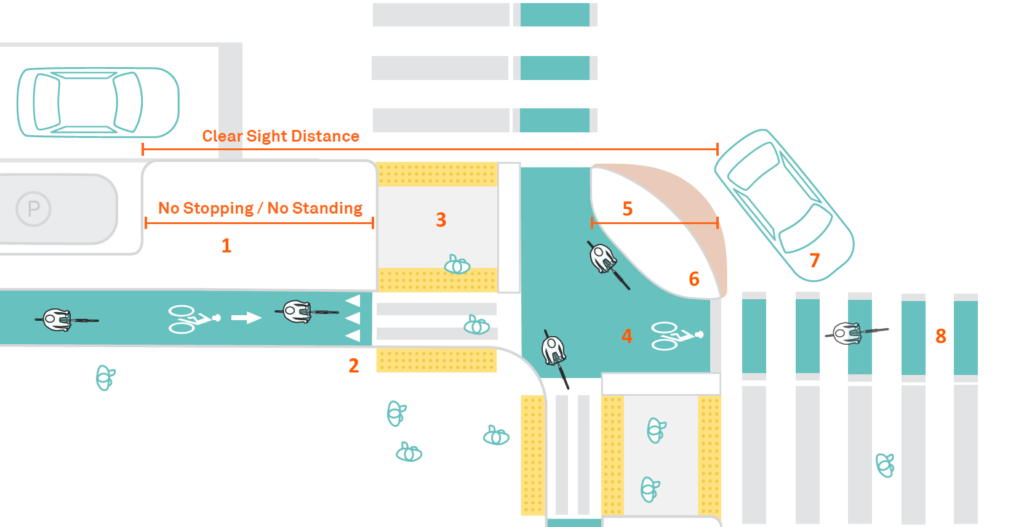
There’s also ample space for through traffic to pass without anyone who’s turning feeling rushed.
Pedestrian crossings are shorter and safer than they are at other intersections.
Both those on foot and using personal mobility devices benefit from pedestrian islands and curb extensions.
The numbers speak for themselves.
“In San Francisco, a protected intersection design resulted in 98% of drivers yielding to people on bikes, and 100% yielding to people walking,” NACTO said.
“A study in New York found that protected intersections had fewer vehicle-bike conflicts than even a dedicated turn lane with a dedicated bike signal phase.”
The great news: a protected intersection – or some variation on it – can work at any city or small-town junction, no matter how busy.
College Station, Texas, home of Texas A&M University, was the first US spot to construct a non-signalized version.
A couple more were erected in Austin, Texas, the year before.
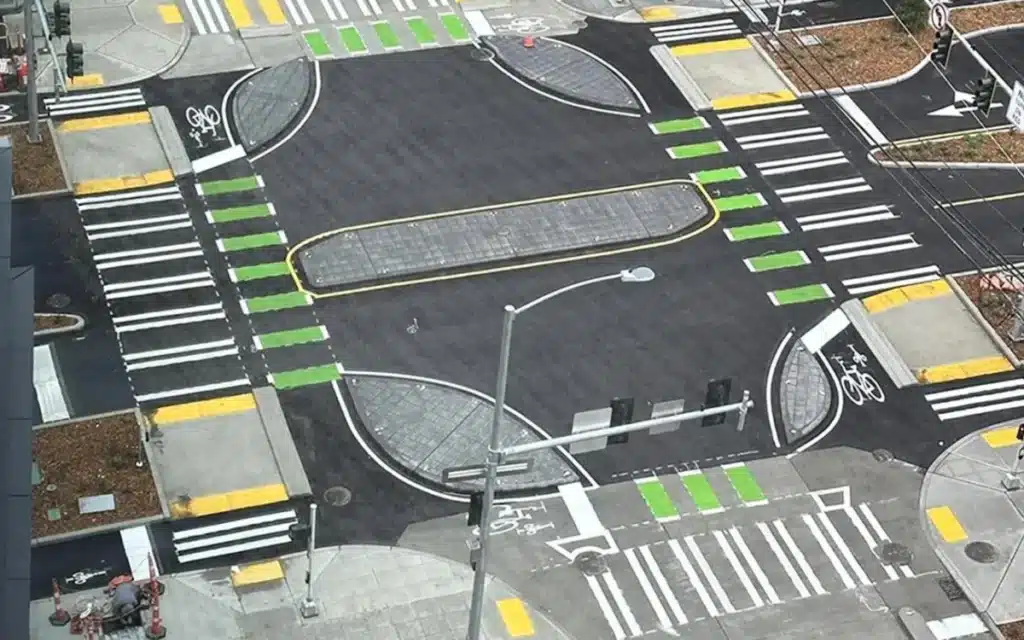
More recently, builds include San Luis Obispo on California’s Central Coast installed a protected intersection in 2022.
And Seattle followed suit earlier this year with Eugene, Oregon, getting onboard in August.
Wherever you are, keep your eyes peeled for one in your area or one of several new safety features.
Like the glow-in-the-dark lines on the roads being trialed in Australia to improve safety at night.
You can see them in action, here.
DISCOVER SBX CARS: The global premium car auction platform powered by Supercar Blondie
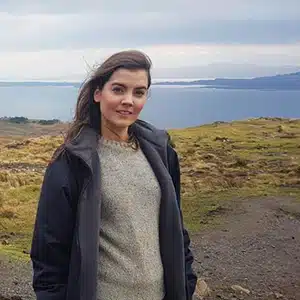
All Supercar Blondie contributors undergo editorial review and fact-checking to ensure accuracy and authority in automotive journalism. After gaining her BA Hons in French and English at the University of Nottingham, Amelia embarked on a vocational diploma from the National Council for the Training of Journalists (NCTJ). This led to numerous opportunities, from interning at Vogue to being on the small team that launched Women’s Health magazine in the UK, which was named the PPA Consumer magazine of the year for three years running. As Health, Beauty and Fitness editor, Amelia personally received a Johnson & Johnson Award and was shortlisted for both PPA and BSME titles. Since then, Amelia has created content for numerous titles and brands, including the Telegraph, 111 Skin, Waitrose, Red magazine, Stylist, and Elle, as well as being Head of Content at Vitality and Editor in Chief at INLondon magazine. “My superpower is translating technical jargon about the mechanical workings of a supercar into a relatable story you’ll want to share with your friends after you’ve read it.” After joining the SB Media family as a senior journalist in September of 2023, Amelia’s role has evolved to see her heading up the SEO output of the editorial team. From researching the most ‘Google-able’ key terms to producing evergreen content - it’s been a time of hard work, growth, and success for the editorial team and the Supercar Blondie website. “I like to think of myself as a ‘method journalist’. In other words: I live and breathe whatever I am writing about. When writing about fitness, I trained as a personal trainer, and as a beauty editor, I completed an ‘expert’ in scent diploma with the Fragrance Foundation. “During my tenure at Supercar Blondie, however, I did something I never thought possible: I passed my driving test at the age of 36. One day I’d love to train as a mechanic to better understand what happens under the hood, too. “My sweet spot is providing readers with a ‘takeaway’ (read: something new they didn’t know before) after reading every one of my stories. While I don’t claim to be an expert in the automotive world, I know the experts and bodies in the field to rely on to provide our readers with an informative and thought-provoking story every time they visit the site.”
